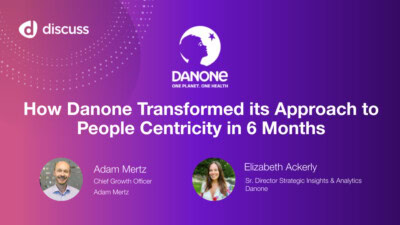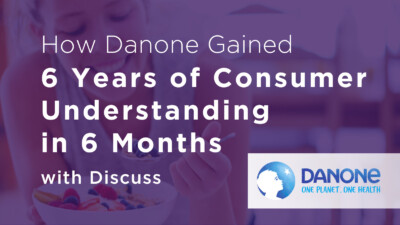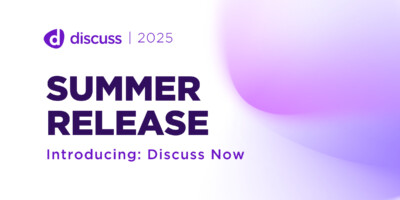Beyond NPS: Understanding Customer Satisfaction with Qualitative Research

A net promoter score (NPS) is highly valuable when it comes to measuring overall customer loyalty and satisfaction, in turn increasing the likelihood that customers will stick with a company over time and recommend it to others.
Conversely, unhappy customers are also likely to talk about their bad experiences, which can risk a company’s reputation and long term growth. According to the White House Office of Consumer Affairs (as cited in Inc.), dissatisfied customers typically tell nine to 15 other people about their experience; some tell 20 or more. NPS can then become a key indicator of how your customers are portraying your company to prospects.
The stakes have never been higher for businesses to better understand their customers. According to the Zendesk Customer Experience Trends Report 2021, 50% of customers will switch to a competitor after one bad experience; 80% will switch after more than one bad experience.
While NPS puts a neat, numeric value on customer satisfaction, it’s a limited metric because it does not offer qualitative insights. It does not address the why of customer behavior and satisfaction. When it comes to things that make a big impact in either delighting or detracting from your customer experience, the devil is in the details.
Focusing on improving the customer experience is the obvious solution to improve scores…but where to start?
Leveraging qualitative research at scale gets to the heart of what’s driving your company’s NPS by looking at the customer and user experience itself. Gaining more context by clarifying customers’ comments truly addresses the “why.”
Below are five tips to gain a high NPS and dive even deeper, unlocking meaningful insights from your customers.
Five Tips to Take Control of Your NPS Numbers
1. Focus on The Marketing Mix
Did you know that (according to Salesforce) 66% of consumers expect companies to understand their unique needs and expectations?
To better understand what makes your customer tick, first identify which events are driving their perception of value — not just whether someone says they like the actual product/service. To leverage qualitative research for this purpose, it really pays to examine the customer experience from all angles. Review each aspect of your marketing mix to truly interrogate the touchpoints and tactics that affect your customer’s experience.
Looking across all aspects of the marketing mix helps you to know when to stop, start, or continue doing something. This in turn can help you to hone in on areas that are driving satisfaction or need improvement.
Discuss.io’s purpose-built video platform offers you multiple points of interaction to gain such valuable insights. For example, in-depth conversations with a single customer can help you dive deep into an individual’s experience. While focus groups allow for more of a groupthink, allowing you to compare and contrast participants’ experiences in real time.
And to better understand mobile users, you can focus on key touch points by using mobile screen sharing to walk through an interaction and identify friction points related to purchase or use. Finding focus through these touchpoints can drive increased performance for your business, as now you’ll know what your customer’s satisfaction levels are, why they find them delightful, and what to do to broaden their impact.
2. Analyze Insights at Scale
Diving deep to understand the nuances of customers’ experiences can be time-consuming, as qualitative research can generate a lot of data to mine through and extrapolate insights from.
To accelerate speed to insights, Discuss.io developed Augmented Insights, an AI-driven suite of tools that can reduce analysis workloads to enable better insights.
Augmented Insights has two primary features that are powerful for insights teams: sentiment analysis and automated theme identification. Sentiment analysis uses natural language processing (NLP), a form of artificial intelligence to look through the transcript of each interview you conduct to associate positive, negative, neutral or mixed feelings to each topic you discuss.
Automated theme identification analyzes keywords to generate word clouds and key themes. Together, these two features enable immediate insights — instead of wading through days or weeks of data, you can get to the key points faster to make better business decisions about how to go to market.
3. Engage Stakeholders Even More
By inviting members from across your organization to participate, especially those in the C-suite, you gain the opportunity to not only boost customer understanding, but to broaden the conversation with new questions or follow-ups that you may not have considered before. With the Discuss.io platform’s dedicated backroom chat feature, observers can interact directly with the interview moderator to probe into specific questions beyond the discussion guide.
Remaining incognito in the ‘back room’ and feeding questions to the moderator can be very powerful. If you can’t be there, watching the video is the next best thing. Indeed, conducting customer interviews and sharing the findings are a way to create company wide empathy, thereby improving customer centricity.
True empathy comes when you hear directly from the consumer, not by reading a report.
In addition, observers often provide another layer of insight, with different backgrounds and perspectives to feed new questions and angles into the discussion. But having too many cooks in the kitchen can be intimidating to respondents. That’s where Discuss.io’s virtual backroom comes in handy again. Unlike regular video calls, on the Discuss.io platform, observers are blinded from participants so it feels like a more intimate conversation between the participant and the moderator, creating that confidence and connection that allows them to go deeply into their experience.
4. Get More Honest Responses
Writing thoughts down and speaking them aloud engages two different parts of humans’ brains. While an NPS survey with open-ended questions can engage the conscious, analytical brain by requiring written responses, a qualitative interview unlocks unfiltered, subconscious responses. Open discussions allows the interviewer to probe and clarify the consumers’ comments in real time and post justifications. This allows for free association and productive tangents to get at the seemingly irrational reasons why people do the things they do—these are the gems you’ll never see from a written survey, no matter how well you craft your questions. By engaging in qualitative conversations on the Discuss.io platform, you can get to those hidden “whys” efficiently and effectively.
5. Bring Insights to Action
Looking at the underlying reasons for customers’ feelings is a natural first step in understanding what’s behind promoter scores. But how can you make those insights actionable? Identifying themes and trends within the qualitative dataset can sound like a lot of work. But that’s where Discuss.io can make it easy. Using powerful machine learning tools like theme identification, combined with the platform’s video tagging and tag explorer capabilities, streamlines the synthesis process so that you can define, socialize and action the insights that will ultimately drive positive NPS shifts.
Ready to explore what actually drives customer satisfaction? Contact us to get a demo today.
Garry Cook is an Enterprise Account Executive at Discuss.io, spending the last 20 years working with businesses across all industries to help drive better customer satisfaction and helping to improve business outcomes. NPS has been an integral part of Garry’s career as businesses work harder to retain customers. He graduated from the University of Westminster with a 1st Class Business – Marketing degree and published his thesis on how to delight customers.
Ready to unlock human-centric market insights?
Related Articles

5 Trends Shaping the Future of Qualitative Insights
By Jim Longo, Co-Founder & Chief Strategy Officer at Discuss Each year, the Greenbook Research Industry Trends (GRIT) Business &…
By Jim Longo, Co-Founder & Chief Strategy Officer at Discuss Each year, the Greenbook Research Industry Trends (GRIT) Business &…

Navigating Tomorrow: A Glimpse into the Future of Market Research in 2024
Author: Jim Longo, Co-founder & Chief Strategy Officer As a veteran with over 30 years in the market research industry,…
Author: Jim Longo, Co-founder & Chief Strategy Officer As a veteran with over 30 years in the market research industry,…

Qualitative Research: Understanding the Goal and Benefits for Effective Analysis
As market trends evolve at lightning speed in the age of digital transformation, having an intimate understanding of consumer desires…
As market trends evolve at lightning speed in the age of digital transformation, having an intimate understanding of consumer desires…



